Top Indian Directors Redefining Cinema Today

Table of Contents
Exploring the Indian film industry, you’ll find a mosaic of talented directors who’ve transformed the cinematic landscape. Among them, a select few stand out for their exceptional storytelling and innovative techniques. They’ve not only captivated audiences at home but have also garnered international acclaim.
You’ve likely heard of directors who’ve made a splash with high-budget films and groundbreaking narratives. These are the visionaries who’ve pioneered new genres, like vigilante movies in Tamil cinema, and have become the highest-paid filmmakers among their peers. They’ve set the bar high, with some even having their films considered for the Academy Award for Best Foreign Language Film.
As the Indian film industry evolves, directors are pushing the envelope with better stories and screenplays, often mixing genres and introducing fresh, quirky humour. They’re the trailblazers crafting the new wave of Indian cinema that’s now capturing the world’s attention.
S.S. Rajamouli
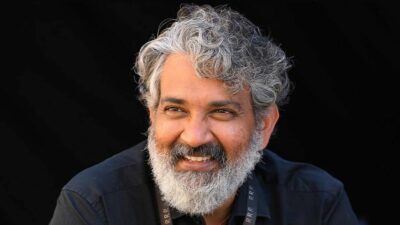
In your deep dive into the Indian film industry’s most illustrious directors, you’ll find the name S.S. Rajamouli standing out for his exceptional contributions. Known for his imaginative world-building and visual storytelling, Rajamouli’s presence in the industry resonates with unparalleled success. His cinematic ventures are not just film releases; they’re cultural events that command attention and discussion across the nation.
Starting his career directing Telugu soap operas, Rajamouli swiftly moved to the big screen with his directorial debut, Student No. 1. He didn’t look back after that. Each successive film showcased his versatility and ambition to elevate the standards of Telugu cinema, known as Tollywood. Simhadri, his second film, cemented his reputation as a director capable of delivering box office hits.
His forays into genre blending are evident in hits such as Sye, Tollywood’s first film based on rugby, showcasing Rajamouli’s flair for marrying unique themes with commercial appeal. This trend continued with Chatrapati, which further expanded his repertoire, proving his capability to tackle diverse genres with ease.
It’s no secret that every Rajamouli film becomes the talk of the town. Spectacles like Eega and Magadheera offer not just a visual treat but are also a testament to his creative prowess. Audiences worldwide eagerly anticipate his projects, such as Baahubali, for their epic narratives and the groundbreaking use of visual effects.
What sets Rajamouli apart in the pantheon of Indian directors is the consistency with which his films become blockbuster hits. The secret sauce to his success isn’t just the large scale of his films, but the meticulous attention to storytelling, character development, and a knack for captivating audiences with vibrant filmmaking. His impact on Indian cinema continues to grow, influencing a new generation of filmmakers and enchanting viewers across the globe.
Anurag Kashyap

When exploring the panoramas of Indian cinema, you’ll frequently encounter the bold and audacious craft of Anurag Kashyap. Known for his unorthodox narratives, Kashyap continually pushes the envelope of traditional Bollywood storytelling. His repertoire brims with films that shatter conventions, making him a pivotal figure in the industry.
While his approach may stir controversy, it’s impossible to overlook Anurag Kashyap’s skill as a director. From the crime epic “Gangs of Wasseypur” to the intense romance-drama “Manmarziyaan,” his movies not only garner critical acclaim but also secure a sturdy box office presence. He’s not just a filmmaker; he’s a storyteller who charms and challenges his audiences with every scene.
Kashyap’s undeniably influential position in Bollywood is reflected in his commanding remuneration. Here’s a quick glance at the reported numbers:
| Directed Film | Estimated Remuneration |
|---|---|
| General | Rs. 11.15 Crore |
These figures speak volumes of his stature and the unwavering demand for his cinematic vision. You might find Kashyap’s films intriguing, perhaps even polarizing, but one thing’s sure — they’re crafted by a director who’s never afraid to take risks.
Despite occasionally being at the heart of controversies, it’s Kashyap’s unapologetic commitment to his craft that keeps him on the list of top-paid directors. Whether it’s the gritty realism in “Dobaara” or the raw energy in “Gangs of Wasseypur,” Kashyap’s flair for authentic, engaging narratives leaves an indelible mark on audiences and the film fraternity alike. It’s this relentless pursuit of cinematic excellence that underscores why he remains one of India’s best directors.
Yash Chopra
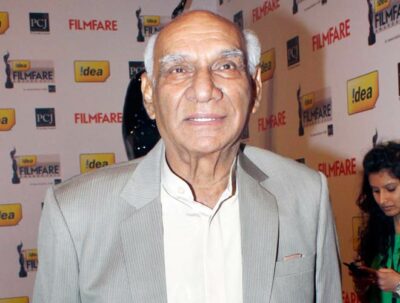
When you delve into the panorama of Indian cinema, Yash Chopra’s name resounds as a hallmark of romantic storytelling. The “King of Romances,” as he is affectionately called, not only escalated the genre to new heights but also etched his narratives into the hearts of millions. His cinematic journey began in Lahore, but it was in Mumbai where his vision took flight, shaping an illustrious directing career that spanned decades.
Chopra‘s filmmaking philosophy was built on the bedrock of emotional depth, engaging narratives, and visually stunning works. With classics like Deewaar, Kaala Paani, Itefaaq, and Mashaal under his belt, he established himself as one of the most commercially successful directors in the landscape of Indian Cinema.
Throughout his career, Chopra founded Yash Chopra Films, a studio that has become synonymous with high-quality Hindi film production. His commitment to his craft led to a string of super hits, including Waqt, Kabhi Kabhi, Silsila, Lamhe, Chandni, Dil To Pagal Hai, and Veer-Zaara. These films didn’t just resonate with audiences; they became cultural milestones that defined entire generations.
- Dewaar (1975)
- Kaala Paani (1958)
- Itefaaq (1969)
- Mashaal (1984)
The familial connections within the industry also played a significant role in honing Chopra’s directorial expertise. He refined his skills under the tutelage of I.S. Johar, and later, his brother B.R. Chopra. His other brother Dharam Chopra contributed to his films as a cinematographer, truly making it a family affair in the realm of movie-making.
Yash Chopra’s romantic epics have not only inspired a generation of filmmakers but also cemented his legacy as a director who could capture the complexities of love with remarkable finesse. His movies blend gripping tales with lush visuals and compelling characters, engendering a sense of timelessness. Fans of Indian cinema can trace the evolution of Bollywood’s romance genre through Chopra’s extensive filmography, witnessing his undeniable influence on the cinematic arts.
Guru Dutt
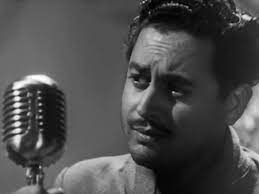
When you delve deeper into the annals of Indian cinema, Guru Dutt’s name emerges as a luminary. Born in 1925 in the Madras Presidency, Dutt revolutionized the Hindi film industry by masterfully blending artistic sensibilities with mainstream appeal.
Dutt’s directorial vision captivated audiences far beyond India’s borders. He established a massive following in countries like Germany, Japan, and France, where his storytelling prowess and cinematic techniques resonated powerfully. His films were not just popular; they were groundbreaking, straddling the line between art-house sophistication and accessible entertainment.
His body of work, though limited due to his untimely death at 39, includes some of the most celebrated films in Indian cinema. With only eight movies officially credited to him as a director, his impact was nonetheless profound.
Consider the prestigious recognition from Time Magazine’s All-Time 100 Best Movies list where two of his movies, Kaagaz Ke Phool and Pyaasa, hold esteemed places. It’s a testament to his visionary craft that his work continues to be celebrated on such a global platform.
Beyond these two gems, his films Sahib Bibi Aur Ghulam and Chaudvin Ka Chand are etched in the memory of cinephiles for their arresting narrative and aesthetic richness. These movies serve as enduring classics, offering a window into the nuanced exploration of human emotions and societal norms prevalent in Dutt’s time.
Dutt’s dual talent as both a director and actor enriched his storytelling, allowing him to inject a personal depth into his characters and scenarios. His legacy endures through his unique ability to convey complex emotions and construct compelling narratives that engage audiences on multiple levels.
| Film Title | Recognition |
|---|---|
| Kaagaz Ke Phool | Time Magazine’s All-Time 100 Best Movies List |
| Pyaasa | Time Magazine’s All-Time 100 Best Movies List |
Umesh Kulkarni
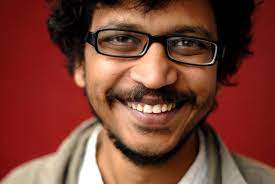
In the diverse tapestry of Indian cinema, Umesh Kulkarni stands out as a director of remarkable skill. He is known for his satirical edge and an uncanny ability to capture the idiosyncrasies of rural life. Kulkarni’s journey began with short films that garnered attention at international film festivals, leading to a retrospective of his work at the prestigious Clermont-Ferrand festival in France.
His debut feature, Valu (2008), is a microcosm of Kulkarni’s thematic interests. The film revolves around a village in Maharashtra wherein a holy bull becomes a source of conflict. Here, Kulkarni deftly combines elements of satire with the nuanced portrayals of human nature, against the backdrop of stunning landscapes.
- Vihir (2009) – a sophisticated philosophical tale of a boy coming to terms with his cousin’s death.
- Deool (2011) – a masterful critique of religious commercialisation punctuated by traditional song and dance.
Kulkarni’s ability to blend mainstream elements with arthouse sensibilities catapulted him into the mainstream cinema conversation. His films have been a staple at festivals and are emblematic of a new wave in Marathi cinema. Deool particularly garnered attention for skillfully weaving critical commentary with the accessibility of a broad cinematic palette.
Aside from directing, Kulkarni has made substantial contributions as a producer. From Bariwali (2000) to Dosar (2006) and Unishe April (1994), his investment in cinema extends beyond his own directorial efforts, supporting and enabling a variety of other notable features.
Kulkarni’s narrative prowess and eye for the intricacies of the human condition affirm his status as an influential voice in Indian cinema. His films don’t just tell stories; they invite viewers into the rich and complex world of their characters, creating experiences that resonate long after the credits roll. With each project, Kulkarni continues to push the boundaries of storytelling, affirming that the best directors aren’t just seen—they’re felt and remembered.
Prashanth Neel
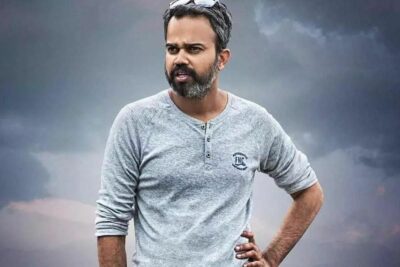
As you venture deeper into the landscape of Indian cinema, you’ll encounter Prashanth Neel, a visionary director whose impact on the Kannada film industry is undeniable. Born into a family with strong roots in Andhra Pradesh, Neel’s flair for cinematic craft is arguably influenced by his rich cultural heritage. Karnataka, where he was raised, provided the backdrop for his enchanting stories.
Neel’s directorial debut, Ugramm, not only broke ground in Kannada cinema but also introduced a new aesthetic to action films. His penchant for creating raw and gritty narratives captured audiences’ attention, solidifying his reputation as a filmmaker with a distinct voice. Neel’s familial ties to the industry, ranging from his sister’s marriage to Kannada actor Sriimurali to his connection with the state minister Raghu Veera Reddy, suggest a familial nurture of his talents.
In 2018, Prashanth Neel’s fame soared with the release of KGF: Chapter 1. This two-part series amassed a staggering following and became a commercial success. The director’s intuition for grand narratives and larger-than-life characters elevated his status amongst Indian filmmakers.
Prashanth Neel’s Impact on Box Office Revenue
Prashanth Neel’s influence isn’t confined to critical acclaim; it extends to impressive box office returns. His directional prowess propelled KGF: Chapter 1 to become a pan-Indian success, creating anticipation for sequels within the Telugu cinema landscape. This appetite for Neel’s work illustrates the potential returns on investments in the Indian film industry, where divergent regional cinemas merge to allure a pan-Indian audience.
| Director | Estimated Charge Per Project (INR) |
|---|---|
| SS Rajamouli | 2 billion |
| Rajkumar Hirani | — |
| Prashanth Neel | — |
Note: Specific charge figures for directors other than SS Rajamouli are not provided, but the context establishes the financial success of directors like Prashanth Neel in India’s booming cinema industry.
Rajkumar Hirani

As you explore the upper echelons of Indian cinema, Rajkumar Hirani stands out as a monumental figure in Bollywood. Beginning with the heartwarming hit Munna Bhai MBBS, Hirani’s directorial journey led to a series of groundbreaking films that have left an indelible mark on Indian filmmaking.
Hirani’s mastery blends humor with social commentary, creating films that resonate deeply with audiences. His portfolio includes Lage Raho Munnabhai, which not only entertained but also sparked conversations on Gandhian values. Then came 3 Idiots, a film that captured the struggles and aspirations of Indian students. Each release showcases Hirani’s ability to craft compelling narratives that transcend cultural and linguistic barriers.
Success Meets Commercial Viability
It’s Hirani’s uncanny ability to marry critical acclaim with box office success that sets him apart. Films like PK and Sanju have shattered records, becoming some of the highest-grossing Bollywood films domestically and internationally. His success isn’t just reflected in applause and awards but also in robust financial returns. This distinct combination has made Hirani one of the most sought-after directors in the industry.
Featuring an extraordinary track record of hits, Rajkumar Hirani’s remuneration is a testament to his value in the film industry. With a staggering fee ranging from Rs 70-80 Crore per film, it’s apparent that producers deem every penny spent on Hirani a worthwhile investment.
The Pillar of Modern Bollywood
Hirani’s contributions to Bollywood extend beyond just box office numbers; he’s shaped an era of film where the audience expects substance along with spectacle. With each film, Hirani cements his status as a filmmaker who understands the pulse of the nation and in doing so, has become a household name. His accolades, including multiple National and Filmfare Awards, reinforce his position as a creative force.
Rajkumar Hirani has directed over 80 films cutting across languages such as Malayalam, Hindi, Tamil, and Telugu. His influence isn’t confined to a single genre; he’s known for steering some of the best comedies to have graced Indian screens like Hera Pheri, Hungama, and Bhool Bhulaiyaa, bringing laughter and joy to millions.
Rituparno Ghosh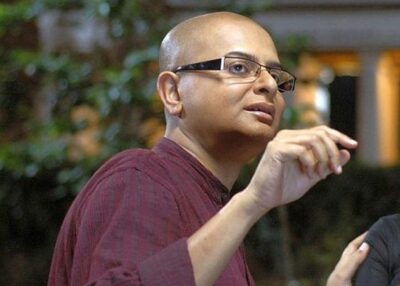
When delving into the annals of Indian cinema, Rituparno Ghosh‘s name surfaces with a certain reverence. Ghosh emerged as a bold and sophisticated storyteller, often regarded as one of the finest filmmakers post-Satyajit Ray. Your understanding of Indian cinema wouldn’t be complete without recognizing the work of this brilliant director.
With an immensely creative portfolio of 23 features crafted over just 21 years, Ghosh’s prolific output is nothing short of impressive. Beyond quantity, it’s the quality of his storytelling that leaves a lasting impact. As you explore his films, you’ll uncover a nuanced tapestry of social mores and human relationships, marbled with both the frailties and hypocrisies of life. His works resonate due to their sharp observational quality and the use of dialogues that can be delightfully incisive.
Rituparno Ghosh’s finesse extended to his musical selections, which were integral to the texture of his films. Integrating folk songs, pieces by Rabindranath Tagore, and even western classical music, Ghosh carved out a spectacular auditory experience to complement his visual storytelling.
| Award Type | Number Won |
|---|---|
| National Film Awards | 12 |
Not only did his work garner National accolades, but it also received international fame, confirming Ghosh as a key figure in the global panorama of Indian directors. Films like Raincoat, Chokher Bali, and Chitrangada bear testimony to his expansive creativity, each echoing the sensibilities and depth that Ghosh brought to Indian cinema.
Beginning his career directing in advertising, Ghosh took the big leap with a children’s feature Hirer Angti in 1992, which marked the onset of a celebrated era in Bengali filmmaking. His craft transcended language barriers, reflecting a universal appeal that allured cinephiles across the globe.
The Pioneers of Indian Cinema
As you delve deeper into the rich tapestry of Indian cinema, you’ll discover the foundational figures whose innovative visions and storytelling prowess paved the way for future generations. Two trailblazing names stand as colossal figures: Dadasaheb Phalke and Satyajit Ray.
Dadasaheb Phalke – The Father of Indian Cinema
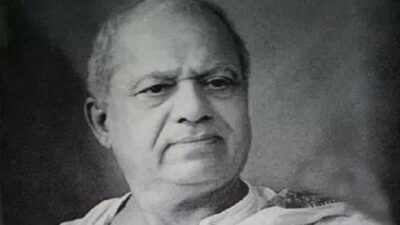
Dhundiraj Govind Phalke, better known as Dadasaheb Phalke, is universally acclaimed as ‘The Father of Indian Cinema’. His maiden voyage into the world of films with Raja Harishchandra in 1913 heralded a new era for Indian movies. As the first full-length Indian feature, this film marked a milestone in cinematic history.
Phalke’s indelible influence on Indian cinema is reflected in his extensive oeuvre which includes 95 feature-length films and 27 short films over a career spanning 19 years till 1937. His body of work encapsulates his devotion to the craft and his propensity for epic mythological storytelling, as seen in noteworthy films such as Mohini Bhasmasur (1913), Satyavan Savitri (1914), and Kaliya Mardan (1919).
The Government of India bestowed upon Dadasaheb Phalke the ultimate homage by naming its prestigious lifetime achievement award for cinema, the Dadasaheb Phalke Award, in his honour. Today, filmmakers and cinephiles attribute the evolution and stature of Indian cinema significantly to Phalke’s foundational contributions.
Satyajit Ray – The Master Storyteller
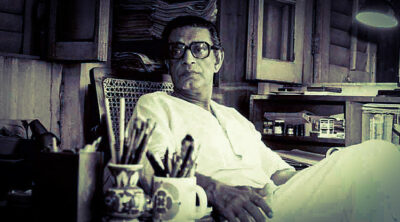
Satyajit Ray—a name that resonates with artistic mastery and narrative elegance. Born in Calcutta, Ray’s illustrious career featured a diverse array of roles as a director, screenwriter, author, and composer. Not just a prominent figure in Indian cinema, Ray is celebrated as one of the most illustrious filmmakers across the globe.
His film Pather Panchali (1955), the first of The Apu Trilogy, not only won widespread acclaim, earning eleven international prizes including the Best Human Document award at the 1956 Cannes Film Festival, but it also set a precedent for authenticity in cinematic portrayal that many strive to emulate even today.
Ray’s oeuvre is vast and varied with classics like The Music Room (1958), The Big City (1963), and Charulata (1964). What stands out in every piece of Ray’s art is his acute observation of the human condition portrayed through the lens of Indian society. His creative journey was inspired by his initial exposure to international cinema, including his interactions with French filmmaker Jean Renoir and the profound influence of Vittorio De Sica’s Bicycle Thieves.
The legacy that Satyajit Ray left is not confined to his broad spectrum of cinematic creations—it’s etched in the global appreciation of Indian narrative craft, setting an unsurpassable standard for future filmmakers. His works continue to inspire, transcending cultural and geographical boundaries, fostering a universal appreciation for his unique storytelling genius.
Young and Promising Directors
The Indian film landscape brims with emerging talent, steering the direction of cinema towards uncharted territories. Young and promising directors are not just making films; they’re crafting narratives that resonate deeply with both national and international audiences.
Nagraj Manjule – The Voice of the Marginalized
Nagraj Manjule burst onto the scene with his unflinching portrayals of life in the margins. He harnesses the power of his lens to cast a spotlight on stories that are often overlooked. His debut, “Fandry,” introduced audiences to the world of Jabya, a young boy coming of age while grappling with the age-old shackles of caste discrimination. Manjule’s work remains poignant and hard-hitting, exploring the deep-seated prejudices and social hierarchies that plague society.
His follow-up film, “Sairat,” continued to break barriers and box office records, laying bare the harsh realities of inter-caste love in rural India. It’s not just about the narrative; Manjule’s visual storytelling is compelling, his characters complex, and the emotional core of his films, undeniably potent.
Gitanjali Rao – The Animator Extraordinaire

Gitanjali Rao is a name synonymous with creative brilliance in the world of animation. Her films are not just visually stunning; they pack a narrative punch that transcends the medium itself. Rao’s “Printed Rainbow,” charmed critics and cinephiles alike, winning awards and admiration on the festival circuit.
Her feature “Bombay Rose” is a testament to her storytelling prowess, weaving together multiple storylines that paint a rich and textural tapestry of Bombay life. Rao steps into the realm of social commentary with grace, utilising animation to explore themes of love, dreams, and the realities that anchor them.
Prashant Nair – The Filmmaker with a Global Perspective
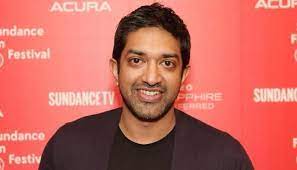
With a repertoire that traverses diverse genres and geographies, Prashant Nair‘s work reflects his global outlook. His acclaimed feature “Umrika” won the Sundance Film Festival’s World Cinema Dramatic Audience Award, underlining his knack for resonating with an international audience.
Nair’s films often dissect the intricacies of identity, belonging, and the human experience. His ability to craft narratives that are both intimate and universal is a hallmark of his filmmaking style. With each project, Nair continues to prove that stories with heart have the power to transcend borders and connect with viewers across the globe.
Conclusion
You’ve journeyed through the landscape of Indian filmmaking, discovering directors who’ve made an indelible mark with their unique visions and storytelling. You’ve seen how they’re reshaping the narrative, from the raw, social realism of Nagraj Manjule to the animated artistry of Gitanjali Rao and the global sensibilities of Prashant Nair. As Indian cinema continues to evolve, these filmmakers are at the forefront, championing stories that strike a chord across borders. Keep an eye on these trailblazers as they continue to redefine the cinematic experience for audiences around the world.
Frequently Asked Questions
Who are some influential directors in the Indian film industry?
Renowned Indian directors include Umesh Kulkarni, Prashanth Neel, Rajkumar Hirani, Rituparno Ghosh, Nagraj Manjule, Gitanjali Rao, and Prashant Nair, among others, each contributing uniquely to Indian cinema.
What is Nagraj Manjule known for?
Nagraj Manjule is acclaimed for his stark portrayals of social issues, particularly caste discrimination, as seen in his impactful films “Fandry” and “Sairat.”
How has Gitanjali Rao contributed to Indian cinema?
Gitanjali Rao has significantly contributed to Indian animation, with her award-winning films “Printed Rainbow” and “Bombay Rose” reflecting her distinct narrative style.
What themes does Prashant Nair’s filmmaking explore?
Prashant Nair’s films, such as “Umrika,” explore themes of identity, belonging, and the human experience, connecting with both national and international audiences.
Which young directors are pushing the boundaries of Indian cinema?
Young directors like Nagraj Manjule, Gitanjali Rao, and Prashant Nair are at the forefront of pushing the boundaries of Indian cinema with their innovative storytelling and exploration of universal themes.





